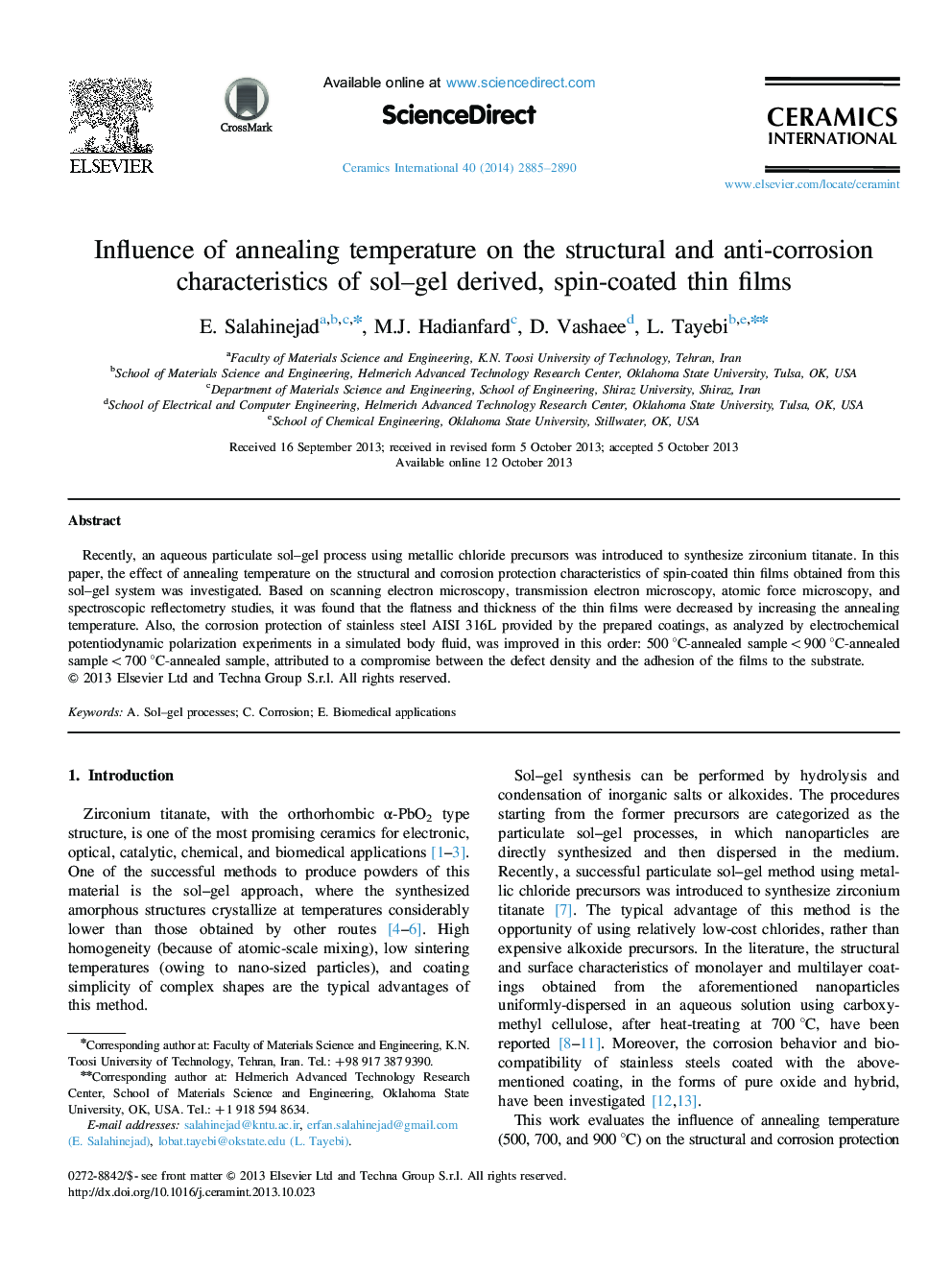| Article ID | Journal | Published Year | Pages | File Type |
|---|---|---|---|---|
| 1461337 | Ceramics International | 2014 | 6 Pages |
Recently, an aqueous particulate sol–gel process using metallic chloride precursors was introduced to synthesize zirconium titanate. In this paper, the effect of annealing temperature on the structural and corrosion protection characteristics of spin-coated thin films obtained from this sol–gel system was investigated. Based on scanning electron microscopy, transmission electron microscopy, atomic force microscopy, and spectroscopic reflectometry studies, it was found that the flatness and thickness of the thin films were decreased by increasing the annealing temperature. Also, the corrosion protection of stainless steel AISI 316L provided by the prepared coatings, as analyzed by electrochemical potentiodynamic polarization experiments in a simulated body fluid, was improved in this order: 500 °C-annealed sample<900 °C-annealed sample<700 °C-annealed sample, attributed to a compromise between the defect density and the adhesion of the films to the substrate.
